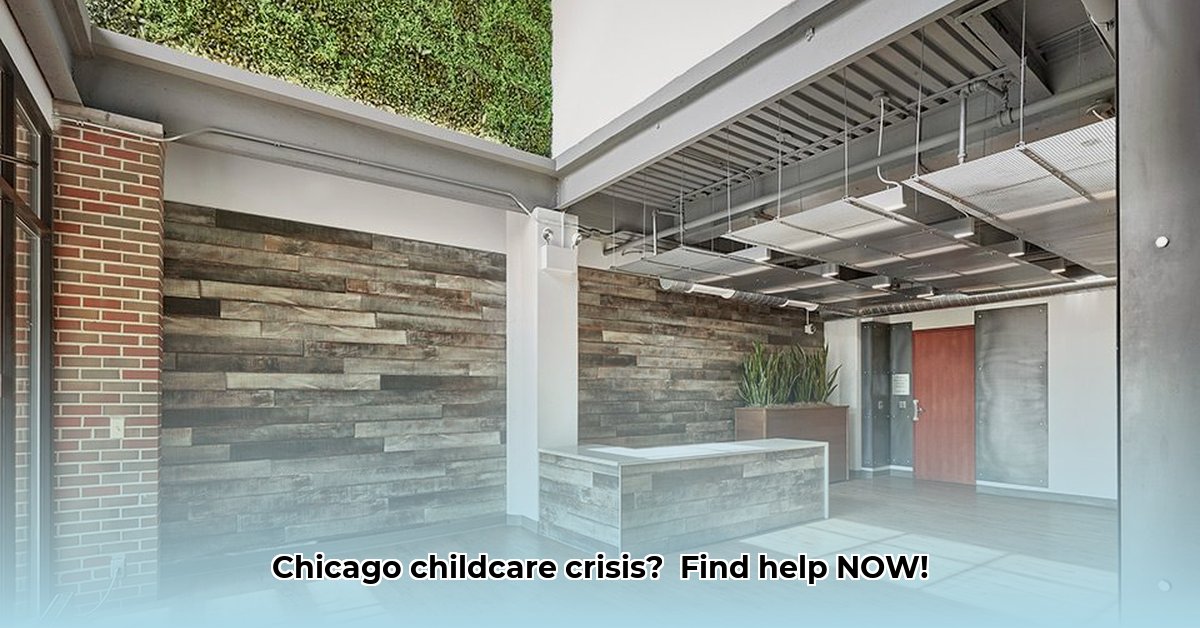
Finding affordable childcare is a significant challenge for many families. The Illinois Child Care Assistance Program (CCAP) offers crucial support, but navigating its complexities can be daunting. This guide provides clear, actionable steps to access CCAP assistance, highlights systemic challenges, and offers recommendations for improvement. We'll address common problems faced by parents and providers in the 1340 S Damen Chicago IL area and beyond, focusing on practical solutions and data-driven improvements.
Understanding the Illinois CCAP Program
CCAP provides financial assistance to eligible families to help cover childcare costs. Access to this assistance typically involves a multi-step process, beginning with an application and often culminating in an in-person appointment. This process, however, presents significant challenges impacting both families and providers.
Current Challenges in Accessing CCAP Services
Many families report difficulties in accessing CCAP services due to several interconnected factors. These include:
Inconvenient Appointment Scheduling: Securing an appointment can be time-consuming and difficult, often involving long wait times and limited scheduling flexibility. This is particularly problematic for working parents with limited availability. How many families report experiencing delays exceeding two weeks in scheduling an appointment? Data on appointment wait times are crucial for measuring program efficiency.
Lack of Clear Online Information: The absence of comprehensive, user-friendly online resources makes it difficult for families to find crucial information and obtain answers to their questions. This often results in unnecessary trips to CCAP offices, further complicating the process. What percentage of families find the current online resources insufficient or confusing? Gathering this data is vital for assessing the effectiveness of current online information.
Accessibility Barriers: The reliance on in-person appointments creates significant barriers for families facing transportation difficulties, inflexible work schedules, disabilities, or language barriers. What percentage of applications are unsuccessful due to logistical challenges related to accessing appointments? This kind of data-driven analysis helps highlight systemic issues.
Complex Application Process: The application process itself is often cited as complicated and demanding, requiring extensive paperwork and documentation. This complexity can deter families from applying for assistance, especially those with limited resources or administrative experience. What portion of applications are incomplete or improperly filed due to the complexity of the forms? Analyzing this data can help target improvements to the application itself.
Recommendations for Improving CCAP Efficiency and Accessibility
Addressing the challenges outlined above requires a multi-pronged approach focusing on improved communication, increased accessibility, and streamlined processes.
Short-Term Improvements: Immediate Actionable Steps
Implement Online Appointment Scheduling: Allow families to book appointments online, choosing times that suit their schedules. This would significantly reduce wait times and improve accessibility.
Develop a Comprehensive FAQ Website: Create a user-friendly website with FAQs addressing common questions in multiple languages (Spanish, Mandarin etc.). This ensures all families can understand the program and navigate the application process regardless of their native language or literacy level.
Streamline Application Process: Simplify the application forms and provide clear, concise instructions. Consider using automated data entry systems to speed up processing and reduce errors.
Long-Term Goals: Substantive Programmatic Changes
Invest in a Robust Online Portal: Develop a secure online portal providing families with real-time access to application status, communication with caseworkers, and secure document upload capabilities. This would transform the user experience and significantly improve transparency.
Expand Outreach and Education: Launch public awareness campaigns targeted at underserved communities to increase awareness of CCAP and its benefits. Ensure that information about the program is widely accessible across all relevant channels.
Improve Data Collection and Analysis: Invest in data management systems to monitor key metrics such as average wait times, application processing speed, and client satisfaction. This will provide valuable insights for continuous improvement.
"The current system is fragmented and unnecessarily complex," states Dr. Anya Sharma, Director of the Center for Childcare Policy at the University of Illinois. "Modernizing the technology and streamlining communication channels will significantly improve access for families and ease the burden on providers."
A Step-by-Step Guide to Applying for CCAP Assistance
The following steps provide a clear path for families seeking CCAP assistance:
Gather Required Documents: Collect essential documents including proof of income, residency, and the identity of the child(ren) for whom you are seeking assistance. Contact Act for Children at https://www.actforchildren.org/ for a detailed checklist.
Complete the Online Application: Carefully fill out the online application form (link to be added). Ensure accuracy to prevent processing delays.
Schedule Your Appointment (if required): Once your application is submitted, you may be required to attend an in-person appointment. Schedule this appointment through the online portal or by phone, if necessary.
Attend Your Appointment: Bring all required documentation to your appointment and answer all questions fully and honestly.
Follow Up: After your appointment, regularly check your application status online or by phone to ensure the process is moving forward.
By following these steps and advocating for systemic improvements, families can secure the vital childcare assistance they need. The journey may be challenging, but with clear guidance and a commitment to enhancing the CCAP program, accessing this support can become significantly more straightforward.